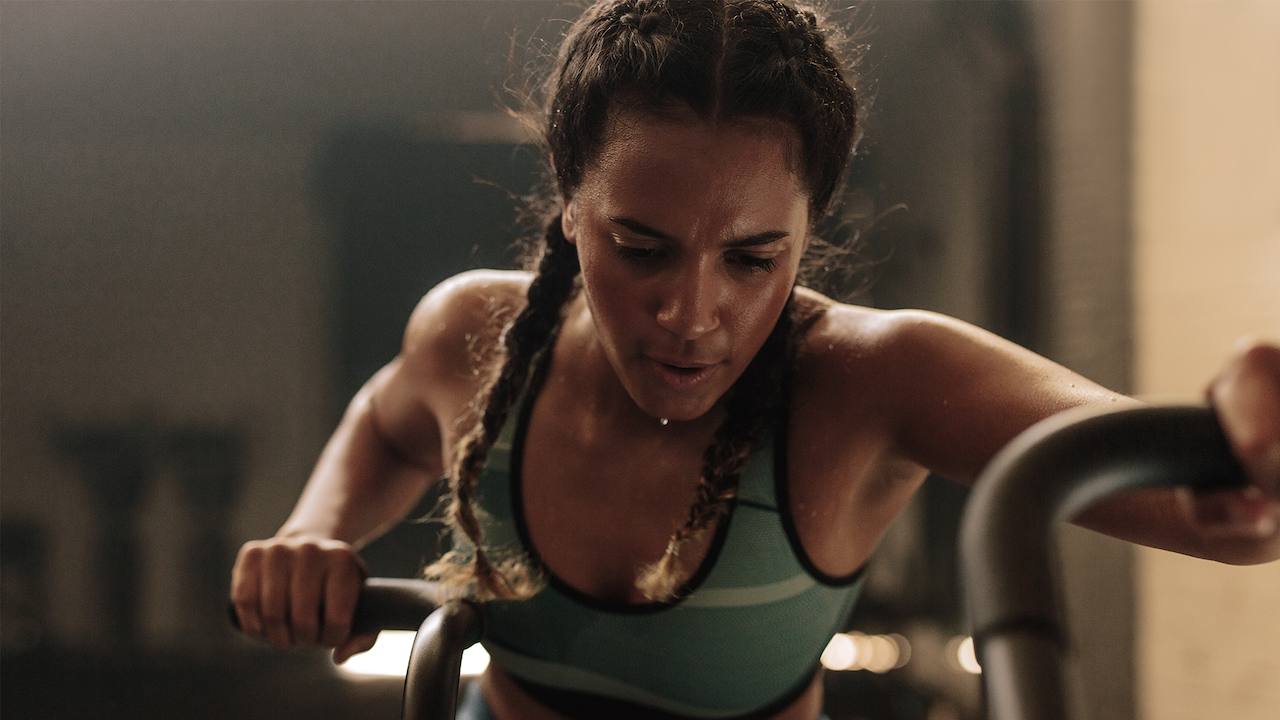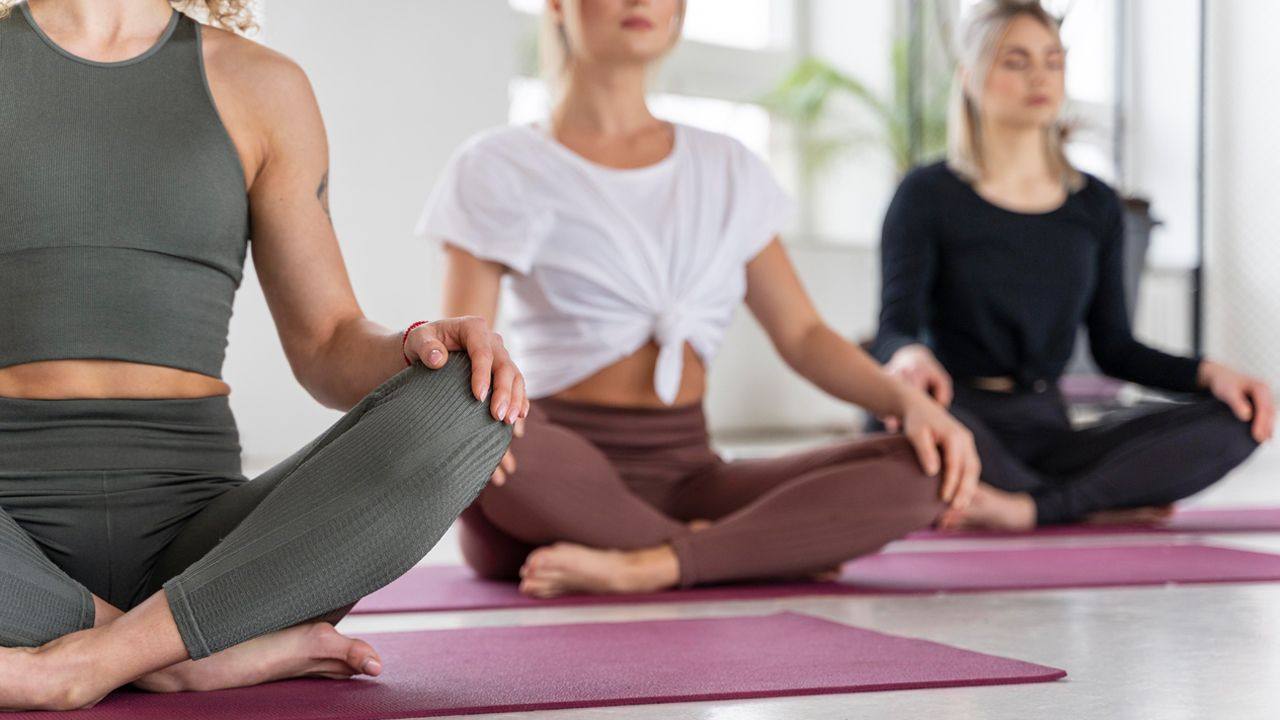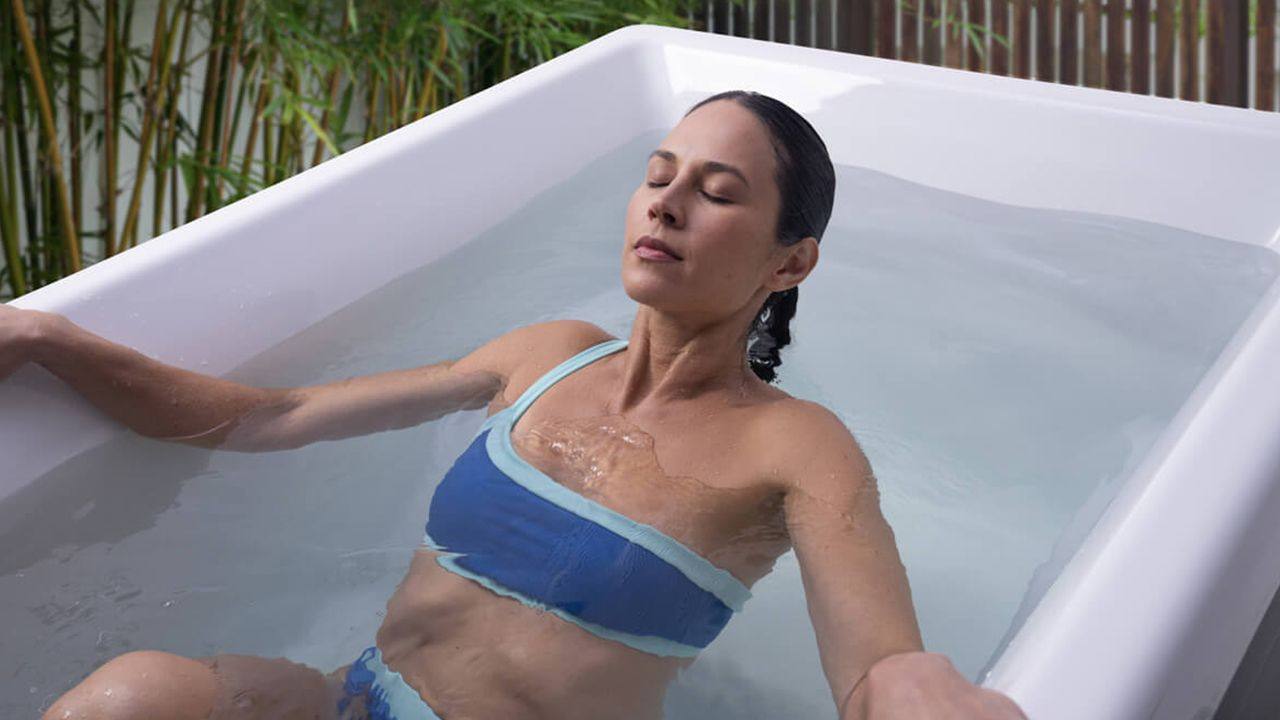What to Do Differently in Peri & Postmenopause
Perimenopause vs. Postmenopause: What Active Women Need to Know
With World Menopause Day happening tomorrow, it feels like the right time to address some key questions I’m often asked about perimenopause and postmenopause. I know only too well that navigating these changes can feel confusing, frustrating, and even disheartening.
Maybe your training isn’t as effective as it used to be. Maybe your nutrition plan suddenly isn’t working. Maybe your recovery feels slower, your sleep is off, or you’re noticing mood swings or shifts in body composition you didn’t expect.
You are not broken. You’re not doing anything wrong. You’re just in a different physiological state—and when you understand what’s going on, you can work with your hormones, not against them.
Let’s break it all down so you can take back control of your training, nutrition, and performance—whether you’re in perimenopause or postmenopause (or supporting someone going through it).
Key Differences: Perimenopause vs. Postmenopause
Think of perimenopause as the transition phase. Hormones—especially estrogen and progesterone—start fluctuating, sometimes wildly. You might feel great one week, and off the next. Sleep, recovery, energy, and performance can all take a hit. Estrogen may spike or dip unexpectedly, impacting everything from insulin sensitivity to mood to muscle protein synthesis.
Postmenopause is what’s on the other side; it becomes the new baseline. Once you’ve gone 12 months without a period, you’re considered postmenopausal, and your hormone levels are low and relatively stable. That stability helps (you shouldn’t have any more wild hormonal spikes or dips), but estrogen’s protective effects on muscle, metabolism, bone, and brain are diminished.
In short:
-
Perimenopause can be unpredictable and reactive. You need consistency and structure.
-
Postmenopause is steadier and more controlled. You need stimulus and support.
Training: Start Where You Are
I’m often asked about the differences in how to train optimally during peri- and postmenopause, and I’ll cover that in more detail below. Before we get into specifics, however, I want to be abundantly clear: I recognize that not all women are starting from the same place. What you need depends on your activity level—not just your hormones. Here’s how I’d frame it:
- If you’re sedentary: Just move—walk, hike, garden, lift things around the house, and/or do body weight exercises. Don’t stress about HIIT or Zone 2. Focus on consistent movement, good food choices, sleep, and social connection. That alone will move the needle.
- If you’re lightly active: Make it more consistent. Add variety. Try strength work once a week, or a new activity you’ve not done for a while, keeping your effort mostly easy but adding some intensity if/when it feels good. You don’t need to specialize yet—just try to find ways to move more, and do it regularly.
- If you’re moderately active: This is where training gets more strategic. Add heavy lifting, mobility work, and start layering in structured intensity—like short sprint intervals or tempo efforts (you can learn more about HIIT & sprint interval training here). Think: quality of the work, not the quantity (volume). It’s when you’re moderately active that the hormonal shifts of the menopause transition start impacting your training and recovery.
- If you’re highly active or athletic/competing: Now we’re talking periodization, hydration strategies, adequate fueling and recovery, deload weeks, and really nailing quality training over the volume of training. This is where being a woman in the menopause transition matters a lot. Your training, nutrition, and recovery need to reflect your hormone profile and your recovery capacity.
Training in Perimenopause
If you’re in this transition phase and already consistently active (moderate to high activity level), we are looking to optimize training stress loads to create positive changes. Here’s how I’d suggest doing so:
-
Consistency is key: Your hormones are unpredictable, but your training shouldn't be. Plan the days you are training and make it your wellness meeting with yourself. If you feel flat on a day you’ve scheduled harder work, take a pause and just move: try technique in the weight room, do a short, sharp, sprint set instead of a HIIT set, or just go for a walk in nature!
-
Lift heavy: Compound movements like deadlifts and squats are great options (think 3–6 reps, 2–4 sets). This preserves lean mass and bone density, and by adding tempo work (varying the speed of the lifts) you can optimize power. REMEMBER: It takes time to learn to lift heavy loads well (sometimes 6-12 months). Don’t compromise form for load, and ideally work with a certified trainer to get a periodized program that encompasses strength, power, and deloads.
-
SIT or HIIT 1–2x/week: Short, hard efforts trigger vascular, mitochondrial, and metabolic adaptation. They can also help with mood and brain health.
-
Impact work matters: Specific jumping, hops, and other multidirectional impact stress is needed to load the bones to improve bone density. Learn more about simple programs that take 2-5 minutes a day and can help improve your bone density at Osteo-Gains.
-
Get back in your groove: Low mood, brain fog, and a lack of motivation are all common symptoms of perimenopause. Don’t be afraid to switch things up and try new activities or make your training more social if you find yourself struggling for mojo.
Your goals: Build and protect muscle. Include some intensity. Stabilize metabolism. Support recovery.
Training in Postmenopause
Once you reach postmenopause, your hormones are low and stable. If you’re already consistently active (moderate to high activity level), then there’s some good news. New research (published this month) in Exercise and Sports Sciences Reviews shows that exercise can potentially offset the negative impacts of estradiol loss by activating similar molecular pathways as estrogen, thus aiding in the preservation of health during the postmenopausal period.
In simple terms, delaying physical activity until well into menopause reduces the effectiveness of exercise, so if you don't already have an exercise habit before you reach menopause, be sure to get one! Assuming you are already moderately or highly active, then here are some other tips I’d suggest:
-
Keep lifting heavy—but rest more: Your recovery time is longer now. Adjust volume, not intensity.
-
Power and mobility are your friends: Explosive movements, yoga, and active recovery will all pay dividends.
-
Stay social and strategic: Train with others, follow a plan (consistency matters!), and track how you feel.
Your goals: Maintain strength. Prevent decline. Stay sharp and mobile.
Nutrition: What You Need in Each Phase
In Perimenopause:
-
Protein is key: Aim for 35-40g per meal, especially at breakfast, and ~20g per snack. Hormonal fluctuations reduce your ability to build/maintain muscle so target ~1g of protein per pound of bodyweight per day.
-
Time your carbs right: The bulk of your carbs should come from fruit and vegetables; try to save the starchy carbs like pasta and bread for pre- or post-workout.
-
Exercise in a fed state, not fasted: Pre-workout snacks don’t need to be complicated, but you do need them. Be sure to incorporate some protein and carbs before you exercise (think a ½ portion of overnight oats or a single serving of low-fat Greek yogurt, or my go-to protein coffee), and then refuel within 30-60 minutes of your session (if it’s a high-intensity session and/or longer than 90 minutes). This will facilitate repair, stop the breakdown effects of the catecholamines (aka stress hormones) released during exercise, and help your sleep, recovery, and circadian rhythm. (Learn more: Why Fasting Doesn’t Work for Active Women).
-
Support sleep and recovery: L-Theanine, magnesium L-threonate, and calming evening routines help.
In Postmenopause:
-
Protein needs stay high: Continue to target ~1g of protein per pound of bodyweight. Try to get fiber and protein at every meal/snack.
-
A switch in appetite often occurs: Whereas in perimenopause you may have felt hungrier, in postmenopause, appetite tends to drop off. This does not mean you need to eat less, it means you need to remember to eat, especially throughout the day: fuel for the stress and activities (training and life!) of the day.
-
Omega 3s and vitamin D matter more now: To counter inflammation and support bone health, consider supplementing to help.
-
Creatine for brain and body: It can help support strength, cognition, and recovery.
-
Keep plenty of color in your diet: Aiming for ~30 plants per week (which includes herbs, spices, fruit, vegs, grains) to keep your gut microbiome healthy and thriving.
In both phases: Hydrate well. Minimize alcohol. Eat adequate amounts of nutrient-dense whole foods.
How Menopause 2.0 Helps You Navigate It All
I created Menopause 2.0 because women kept asking: “Why isn’t anything working anymore?”
This course gives you:
-
The science of what’s happening in your body
-
Clear, stage-specific training concepts and strategies (but not a day-by-day training program; check out Hailey Happens for that)
-
Real-world nutrition advice you can use now
-
Supplement guidance that’s actually evidence-based
-
An empowering approach to midlife and beyond
Whether you’re in the rollercoaster of perimenopause or settling into postmenopause, Menopause 2.0 meets you where you are—and helps you go further. And until next Wednesday (October 22), it’s on sale for $240 USD (or 3 payments of $82 USD), usually priced at $349.
Let’s do this together.
IN OTHER NEWS…
Diary of a CEO Podcast: Female Health Roundtable
I’m excited to share that a new Diary of a CEO podcast with Steven Bartlett went live yesterday. This Female Health Roundtable with Dr. Mary Claire Haver, Dr. Vonda Wright, and Dr. Natalie Crawford was the epitome of collaboration and a lot of fun to record. We covered so much that the show is actually dropping in two parts (Part 2 coming Monday!). Part 1 is on women’s hormones, fertility, and systemic health, and we cover topics such as PCOS and IVF as well as perimenopause and menopause. Part 2 is on bone, muscle, nutrition, and lifestyle, and covers topics such as overtraining, bone density, osteoporosis, supplements, and much more. (And ICYMI here’s the show I recorded with Steven earlier this year).
Best Exercises for Women in Menopause & Perimenopause
Many women in perimenopause and menopause wonder why traditional workouts stop delivering results. In this conversation with Sarah Grynberg, I talk about why compound strength training exercises, such as squats, hip thrusts, overhead presses, and deadlifts, do more than build muscle.
|
Not Hungry First Thing?
I hear a lot of women say they can’t eat anything first thing in the morning (and I get it, I used to be the same), but going into a workout fasted/without fuel can hinder not just your workout, but also your training adaptation, recovery, hunger over the course of the day, and a lot more. In this Instagram reel with Loretta, we talk about starting small with a light snack (a few spoons of yogurt or a bite of banana). Over time your hunger cues can shift, digestion adapts, and you’ll be going into your workout in a fed state, setting yourself up for better energy, focus and recovery throughout the day.
Bringing Awareness to the Women’s Alzheimer’s Movement
Did you know that of the 6 million people in the U.S. with Alzheimer’s, 4 million of them are women? I recently met with Maria Shriver, someone who I’ve looked up to for many years. She shared with me the work she is doing with the Cleveland Clinic to advance the research for Alzheimer's in partnership with the Women’s Alzheimer’s Movement. As I explain in this video, Alzheimer’s is a disease that disproportionately affects women. And although the research is advancing, we still don’t have answers as to why. If you’d like to support this movement, one easy way to do so is by purchasing these MOSH Bars, a brand that Maria co-founded with her son Patrick Schwarzenegger. A portion of all MOSH proceeds are donated to support women's Alzheimer's research, advocacy, and awareness, plus they taste great and contain ingredients designed to help brain and body, like lion’s mane and ashwagandha: it’s a win-win!
Until next time,
Forwarded this newsletter? Join my community here!











